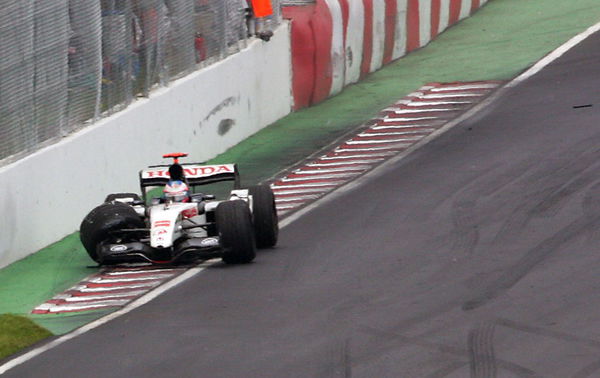F1: How the ‘Wall of Champions’ Got Its Name

Follow Us

The scene for the next race in the F1 calendar is Montreal in Canada. The Circuit Gilles Villeneuve is named after the legendary Canadian driver who is best remembered for his spell with Ferrari and for the father of future world champion, Jacques Villeneuve.
Jacques Villeneuve, to this day, remains the only Canadian driver to have won a world championship in F1. So the history associated with F1 racing in Canada is a very illustrious one. It may not be a classic circuit like a Monza, Spa or Silverstone but it comes with its own thrills and challenges.
It was witness to Robert Kubica’s horrific accident in 2007 and ironically, also the place where he won the only F1 race in his career in 2008. Lewis Hamilton has driven in F1 for 10 years in this circuit and has won it a record 6 times, his latest coming in 2017. He can lay claim to the title of ‘Master of Montreal’ similar to Senna’s ‘Master of Monaco’.
ADVERTISEMENT
Article continues below this ad
Drivers love racing at this iconic circuit but one very unique challenge awaits them as they descend in Canada on the weekend. We often hear commentators referring to the wall at the last chicane as the ‘Wall of Champions’ and they often wonder if a driver can pull off the manoeuvre perfectly.
So what exactly is the Wall of Champions and why was it coined for the wall coming off the last chicane? Well, it all dates back to the 1999 race. On that eventful weekend, three F1 title winners crashed their cars at the exact same place; careering into the wall after catching the curb while coming out of the last chicane.
The three drivers were Damon Hill, Michael Schumacher and local boy, Jacques Villeneuve. Hill had won the world championship in 1996 with Williams and was driving for the Jordan team in 1999. He qualified in 14th position. On lap 15 of the race, as Hill came round the final corner at Turn 13, he lost his rear and crashed into the wall which broke his suspension and ended his race. He was able to move further ahead and stop his car on the grass though and so the safety car was not deployed.

via Imago
Hill was the first champion to crash his Jordan
Michael Schumacher was the second victim on Turn 13. He was a double world champion with Benetton in 1994 and 1995 and was in his fourth year with Ferrari. He put his car on pole for the first that season and was leading the race when catastrophe struck on lap 30. As Schumacher turned in at the last corner, his car went into the curb a bit too much and slid across to hit the wall at quite some speed.

via Imago
Schumacher put his Ferrari in the wall whilst leading
The German was visibly frustrated with himself as he threw up his hands in indignation because he knew he had could have secured the victory but instead it went to his title rival, Mika Hakkinen, who won the world championship for a second consecutive time later in the year.
The final world champion who suffered the same fate as the other two was Jacques Villeneuve. He had won the title after a tussle with Schumacher in 1997 with Williams, in just his second year and was looking like a promising youngster. But 2 years after the epic win, Villeneuve was driving for BAR, not a race-winning car by any means.
ADVERTISEMENT
Article continues below this ad
He qualified in 16th and was driving pretty smoothly as he observed the accidents around him. But he was to undergo the same treatment from the wall at Turn 13 on lap 35. A mere 5 laps after Schumacher crashed, Villeneuve tried turning in to complete his lap but his car did not respond and he went wing-first onto the wall. He did not wait around in his car as he quickly got out and scaled the wall, desperate to walk away from the embarrassment.

via Imago
Villeneuve walks away from his stricken BAR
He had previously crashed his Williams car at the exact location in his title-winning year of 1997 and had thrown away points again in 1999. Apart from the three world champions, the 1999 race saw another driver crash into the same wall at Turn 13. It was Villeneuve’s teammate, Ricardo Zonta who had retired in the other BAR car. In fact, Zonta was the first one to put his car in the wall as early as the third lap.
ADVERTISEMENT
Article continues below this ad
The safety car was deployed four times in that chaotic race, a record in those times. Canada would witness another classic in 2011 when the safety car was deployed 5 times and Jenson Button took the most memorable victory in his career. He had crashed at Turn 13 in 2005 and the wall of champions had claimed another world champion as its victim (though Button only won the world title in 2009).
Among the world champions in the 2018 grid, Sebastian Vettel has crashed his car at Turn 13 in 2011 while others like Hamilton, Alonso and Raikkonen have not suffered a collision there.
Written by:
